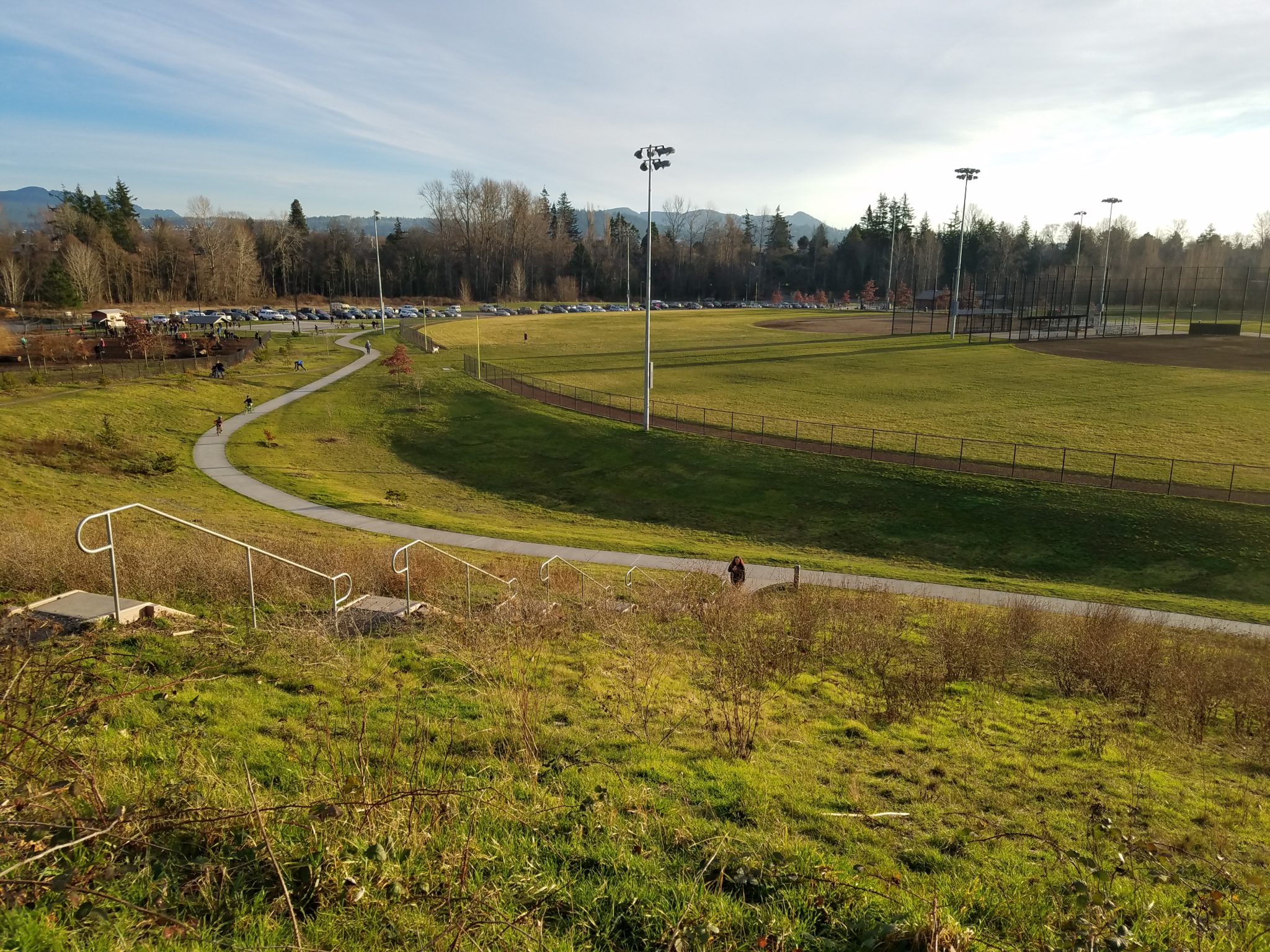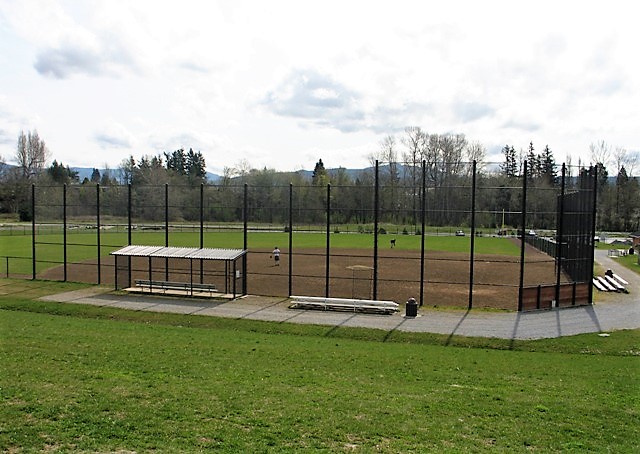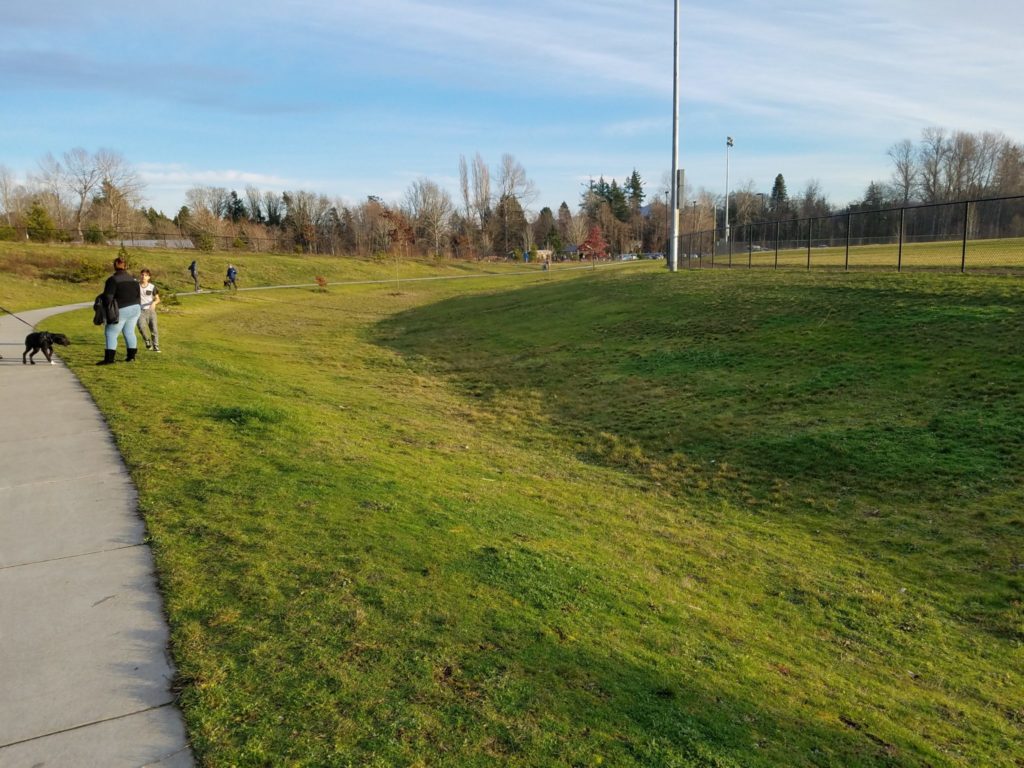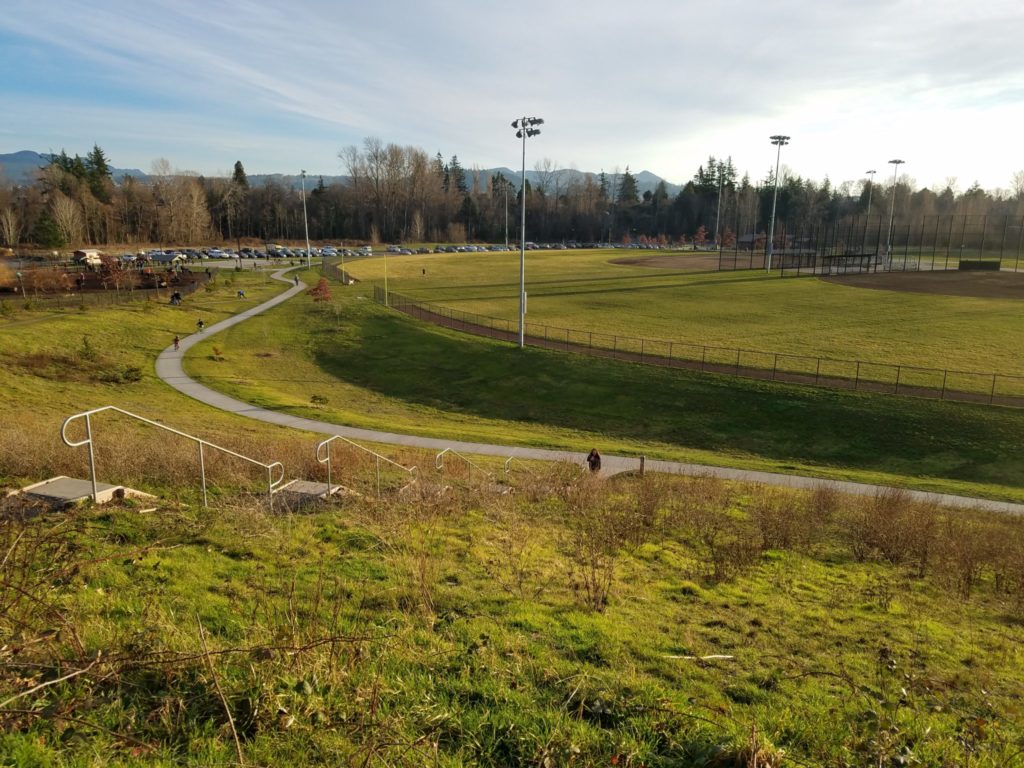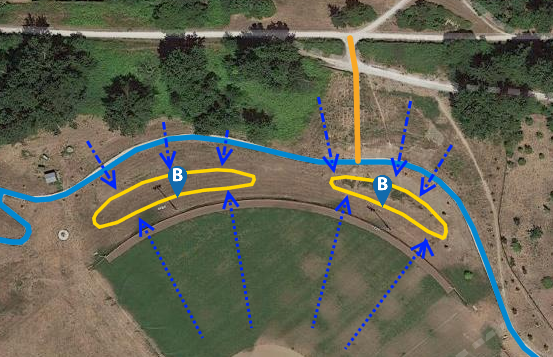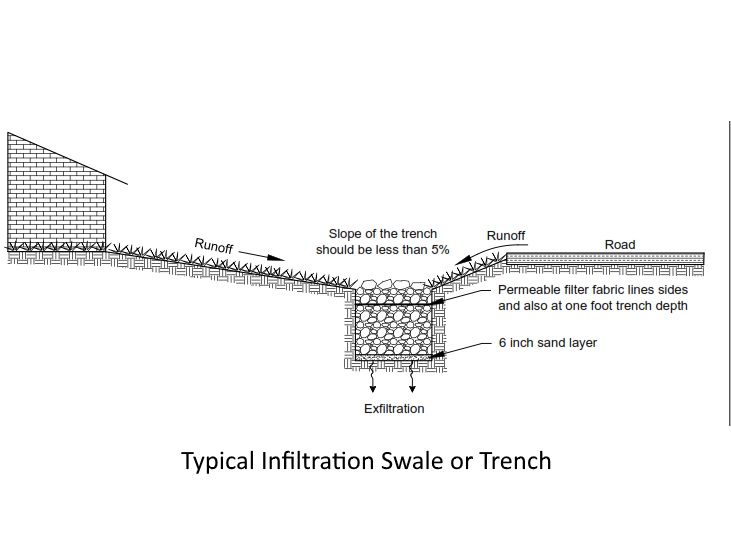Where is this located? It is at the base of the hill below the trail and adjacent to the farthest ball field.
What’s special about this place? Prior to constructing this recreational amenity, drainage was installed under the ball field to collect the rainwater. Once it soaks in, it flows through underground pipes where they emerge at these infiltration basins. The rainwater requires no further treatment and eventually replenishes the groundwater.
image gallery
select any photo to see a slideshow
